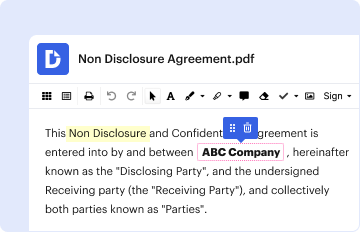Definition & Meaning of Olympus Scope Cleaning Competency
Olympus scope cleaning competency refers to the established knowledge, skills, and practices necessary to ensure the effective cleaning and disinfection of Olympus endoscopes. This competency encompasses understanding the cleaning protocols, following Olympus-specific reprocessing guidelines, and adhering to industry standards. It is crucial for healthcare professionals to develop proficiency in these areas to ensure patient safety and instrument longevity.
Key Aspects Include:
- Familiarity with Olympus endoscope reprocessing manuals, which outline detailed procedures for cleaning and disinfecting scopes.
- Knowledge of the proper handling and maintenance of endoscopes to prevent infection transmission.
- Understanding the significance of compliance with healthcare regulations regarding medical device sterilization.
Steps to Complete the Olympus Scope Cleaning Competency
Achieving competency in Olympus scope cleaning involves a series of methodical steps, each critical in maintaining high standards of hygiene and safety.
-
Familiarization with Cleaning Protocols:
- Review the Olympus endoscope reprocessing manual, ensuring understanding of specific requirements for each type of scope.
- Understand the definitions and terminologies related to scope cleaning.
-
Pre-Cleaning Procedures:
- Conduct initial rinsing of the scope and its accessories immediately after the procedure to remove organic material.
- Perform leak testing on the scope to ensure its integrity before cleaning.
-
Manual Cleaning:
- Use appropriate enzymatic detergents and cleaning brushes recommended by Olympus to scrub the internal and external surfaces.
- Rinse thoroughly to remove all cleaning agents and residues.
-
Disinfection:
- Employ either manual or automated disinfection methods as per the Olympus guidelines.
- Document disinfection procedures to maintain compliance and accountability.
-
Storage and Maintenance:
- Ensure scopes are dried and stored in a clean, organized manner to prevent contamination.
- Regularly check for signs of wear and damage to scopes that may compromise their function.
Important Terms Related to Olympus Scope Cleaning Competency
Understanding terminology related to Olympus scope cleaning competency is essential for effective practice. Some key terms include:
- Reprocessing: The complete cycle of cleaning, disinfecting, and maintaining reusable endoscopes.
- High-Level Disinfection (HLD): A method that eliminates all microorganisms except large numbers of bacterial spores. It is essential in endoscope reprocessing to ensure safety.
- Leak Testing: A procedure to check the integrity of the endoscope ensuring no fluids can enter or exit the device improperly.
By mastering these terms, healthcare professionals can communicate effectively about cleaning procedures and enhance their competency.
Legal Use of the Olympus Scope Cleaning Competency
The legal framework surrounding Olympus scope cleaning competency emphasizes the necessity of adherence to federal and state regulations governing medical device sterilization.
-
Compliance with Healthcare Regulations:
- Follow the Centers for Disease Control and Prevention (CDC) and the Food and Drug Administration (FDA) guidelines related to the reprocessing of medical instruments.
- Ensure all cleaning and disinfection processes are documented, with records maintained for audits and inspections.
-
Staff Training:
- Regular training sessions on Olympus endoscope reprocessing guidelines must be held to ensure compliance with legal requirements.
- Competency assessments should be performed to validate staff knowledge and skills frequently.
Who Typically Uses the Olympus Scope Cleaning Competency
Olympus scope cleaning competency is primarily utilized by the following professionals:
-
Healthcare Technicians and Aides:
- Technicians who handle the cleaning, maintenance, and reprocessing of endoscopes in healthcare settings.
-
Surgeons and Physicians:
- Providers who rely on properly cleaned endoscopes for performing procedural interventions safely.
-
Infection Control Specialists:
- Professionals dedicated to maintaining hygiene standards within healthcare facilities by implementing cleaning practices effectively.
-
Quality Assurance Personnel:
- Individuals responsible for monitoring compliance with cleaning and infection control procedures.
By training these professionals effectively, healthcare institutions can foster a culture of safety and compliance in endoscope usage.


Key Elements of the Olympus Scope Cleaning Competency
To achieve Olympus scope cleaning competency, several key elements must be integrated into daily practices:
-
Knowledge of SOPs:
- Thorough understanding of standard operating procedures for cleaning, disinfection, and sterilization as outlined in Olympus guidelines.
-
Attention to Detail:
- Ability to follow checklists and protocols carefully to prevent common errors in scope cleaning.
-
Record Keeping and Documentation:
- Meticulous logging of all cleaning activities, including dates, methods used, and personnel involved.
-
Continuing Education:
- Engagement in ongoing training and refreshers to keep up with advancements in cleaning technologies and changes in regulations.
These elements together cultivate an environment of accountability and excellence in scope maintenance practices.



